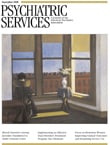The editors of Emotion and Psychopathology aim to provide an overview of the field of affective science. They determined that enough has been written in the many disciplines that contribute to affective science that a summary of current progress was due. The editors are honest with the reader about the limitations of this book and its subject. We are warned in the introduction that terms such as emotion, affect, and mood will be defined differently by each chapter author. In the afterword we discover that there is not one "bridge" between affective and clinical science, but that several spans might be necessary. Despite these challenges, it is worth reading the book in order to understand current methodologies that are applied to affective science to date, to help us understand how we may be able to learn more about psychopathology from studying emotions, and finally to review how much of the science has been translated into treatment.
The book is divided into three sections: "Advances in Basic Affective Science," "Applications to Psychopathology." and "Treatment Applications and Future Directions." Authors for the most part write lucidly and evenly and clearly state the limitations of the current findings while proposing future directions. Most of the authors thankfully assume readers' lack of knowledge and provide tutoring within the text. They want to teach a wider audience, not just the cognoscenti. It's clear that some chapter authors read the work of other chapter authors, creating a book that coheres and is not a merely collection of review articles.
"Advances in Basic Affective Science" exposes readers to methods for measuring affective response. Self-report methods as well as purportedly more objective psychophysiological measures are explored here. In the "Application to Psychopathology" section, emotion research is applied to schizophrenia, bipolar disorder, major depression, phobias, fear, alcohol use disorders, and psychopathy. The authors of the final section, "Treatment Application and Future Directions," suggest how affective science can be applied to anxiety disorders, how it might explain how antidepressants work, and how it may inform psychotherapy and vice-versa.
Researchers and practitioners are likely to benefit from reading this book from cover to cover. Researchers may learn of methods outside their area of interest. Treatment providers will be able to retrieve the many useful nuggets lying in each chapter and apply them to a diverse patient population.
The book is weighted toward the affective research side and highlights the paucity of research on the clinical applications. Readers who desire certainty or require a treatment manual for affective science will not find what they are looking for. The reader who can tolerate unanswered questions but wants to know where the field is today will benefit from this book.

